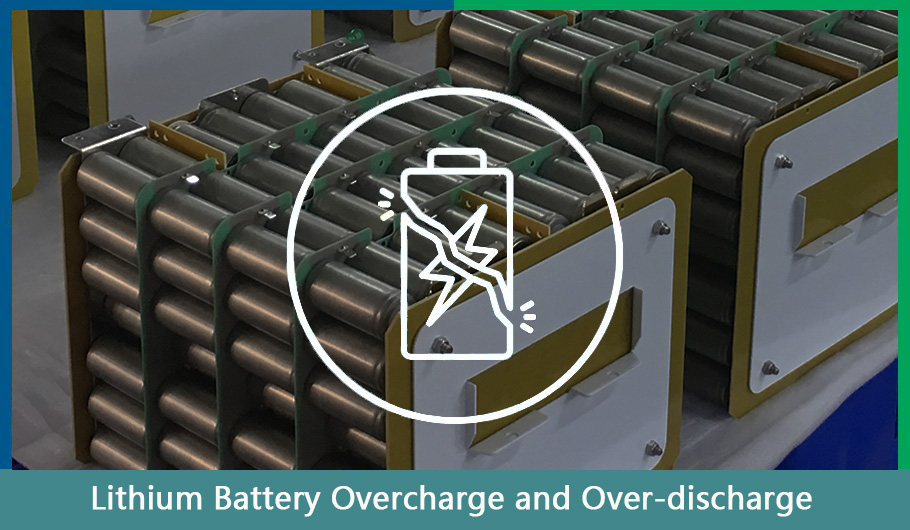Overview
What effect will overcharge and over-discharge have on lithium batteries? How to properly charge a lithium battery? In this article, we will talk about these questions in detail.
Overcharge and Over-discharge of Lithium Battery
Overcharge
When a lithium battery is overcharged, the battery voltage rises rapidly with the increase of polarization, which will cause irreversible changes in the structure of the positive active material, lead to decomposition of the electrolyte, generate a large amount of gas, release a large amount of heat, make the battery temperature and internal pressure increase sharply.
What’s more, overcharging will lead to lithium dendrites, which means a large number of lithium ions will overflow from the positive electrode, and the lithium ions that cannot be absorbed by the negative electrode will form dendrites on the surface of the battery, resulting in short circuit. The short circuit will generate lots of heat. In serious cases, it will also cause the decomposition of the positive electrode or the reaction of the negative electrode with the electrolyte. Eventually, the performance of the lithium battery will drop dramatically.
Over-discharge
When the lithium battery is discharged, the battery voltage drops slowly. And over-discharge is when a cell continues to discharge even the voltage reaches the limit. Over-discharge will increase the internal pressure of the battery, damage the active materials of the positive and negative electrodes, decompose the electrolyte, and significantly reduce the capacity of the lithium battery.
How to Charge Lithium Battery Properly?
First, we should adopt Constant Current charging and Constant Voltage charging to charge a lithium battery. The Constant Current charging should be performed first to raise the voltage to the end-of-charge voltage level. After reaching the required voltage, Constant Voltage charging starts and the current of the lithium battery gradually decreases.
Second, we should lower the charging C rate. At low charging speeds, lithium ions intercalate smoothly into the graphite sheets without damaging the electrodes. However, Li-ion intercalation becomes increasingly difficult as the charge rate increases. If the rate is too high, the lithium ions do not have time to properly penetrate the electrodes. The deposition of lithium metal may occur, resulting in premature battery aging.
Third, we should charge lithium batteries at a suitable temperature. The temperature range should be 0-45℃. The increase in the charging temperature can cause the exfoliation of the graphite sheets, causing the permanent capacity loss of the battery. And if a lithium battery is charged below 0℃, the electrode sheet contracts and the electron conductivity of the electrolyte becomes lower, complicating ion intercalation in graphite. Lithium deposits can be generated, resulting in permanent capacity loss.
Summary
Overcharge and over-discharge can damage lithium batteries. It is important to charge lithium batteries properly to optimize their performance.
If you want to choose the LiFePO4 batteries with excellent performance, Polinovel will be a good choice for you. Polinovel LFP batteries have an intelligent BMS to protect the cells from over-discharge, overcharge, overcurrent, etc, offering us a safe experience.
Company
Application
Product
Get in Touch

Building 3, Vanke Timemark, 85 Longcheng Ave, Longgang Dist, Shenzhen, China

Get our updates, please contact us through one of the following channels.




